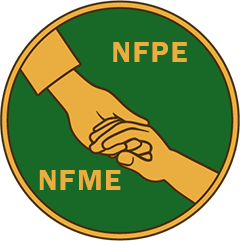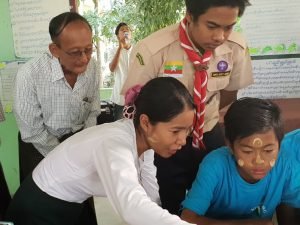
Aims:
- To offer a second chance of education to OOSC (10 – 14 years of age) who cannot complete the primary education
- To provide basic education to the children who have never attended the school
NFPE program, a fast track program completing the primary education in two years (consisting of two levels, level 1 and 2) was launched in 2008 with support from MoE and UNICEF. Later on, other NGOs and Donors also provided their assistance to the program.
For the Quality Assurance of the PE program, MLRC implemented the Standardized Test (fully funded by UNICEF and conducted by the experts from Yangon of Education and MoE) in 2019. As a proven outcome of this, the transition rate to the formal education stream increased to 48% in 2019AY.
Starting 2011, NFPE has been implemented in many townships in Myanmar (up to 104 to date) including Me Sot, the Myanmar-Thailand border area, with the cooperation of UNICEF, UNESCO, World Education, SVA and Local Donors. In 2018-19 AY, MLRC extended 9 townships with the cooperation of UNESCO and Local Donors for the benefit of over 900 children, taught by 68 NFPE teachers and supervised by 12 township monitors and 2 regional monitors. During 2009 to 2018, 9933 NFPE completers joined the formal education stream. 98 students passed the Matriculation Exam in 5 years (1 in 2016, 4 in 2017, 20 in 2018, 38 in 2019 and 35 in 2020. MLRC supports them to continue their university studies.
PURPOSE
- To offer a second chance of education to younger age group (10-14 years) who missed the opportunity of completing primary education or who have never attended schools
- To offer a chance of continuing education at formal secondary schools to those children who have completed NFPE
- It was piloted in 2002-2003 to 2007-2008 in 59 townships by DBE -1.
Learners
- Those who are from poor families with various family backgrounds
- Those who have never enrolled in school
- Those who do not complete primary education
- Those who cannot go to school in school hours
- The most convenient time for learners
- The most appropriate place for learners


